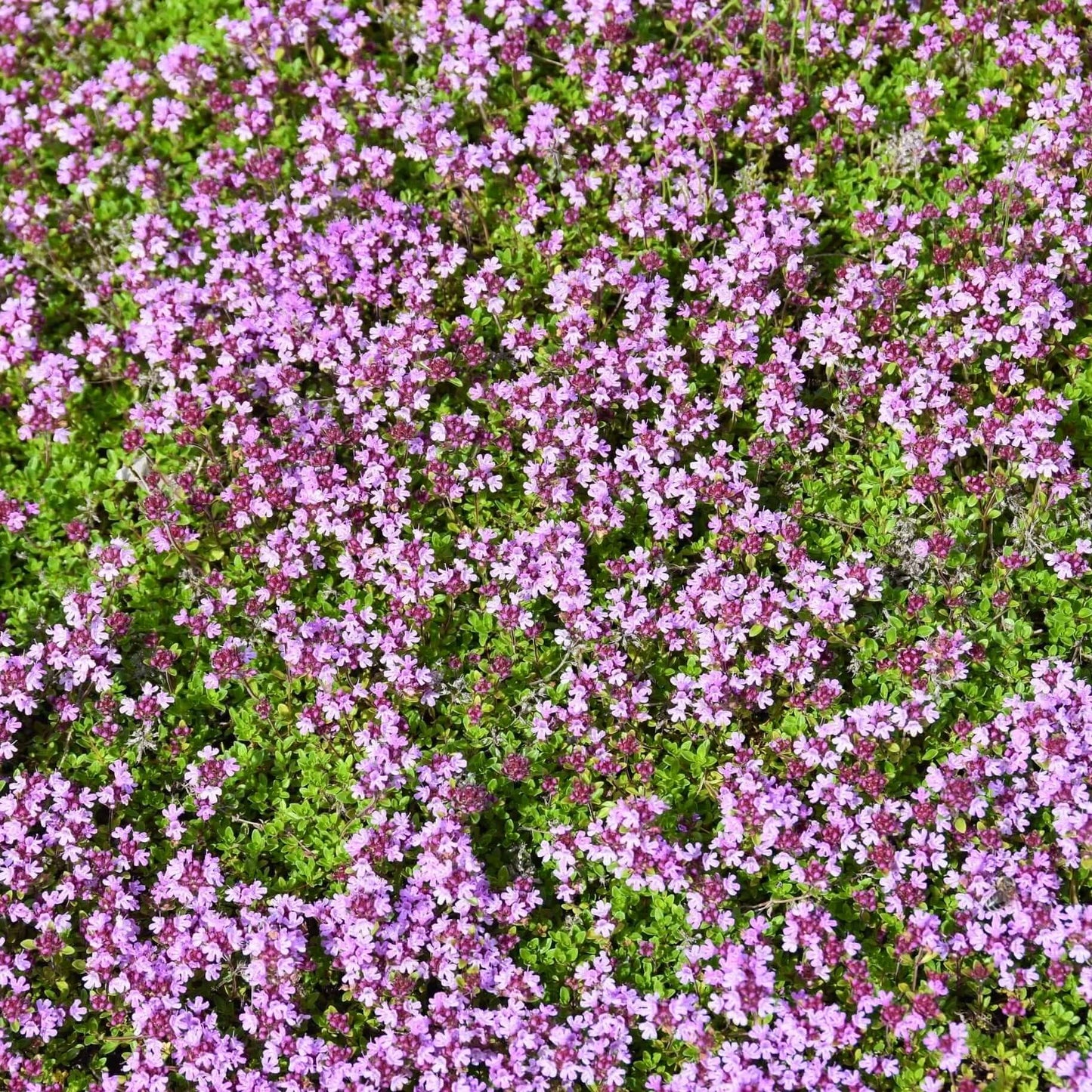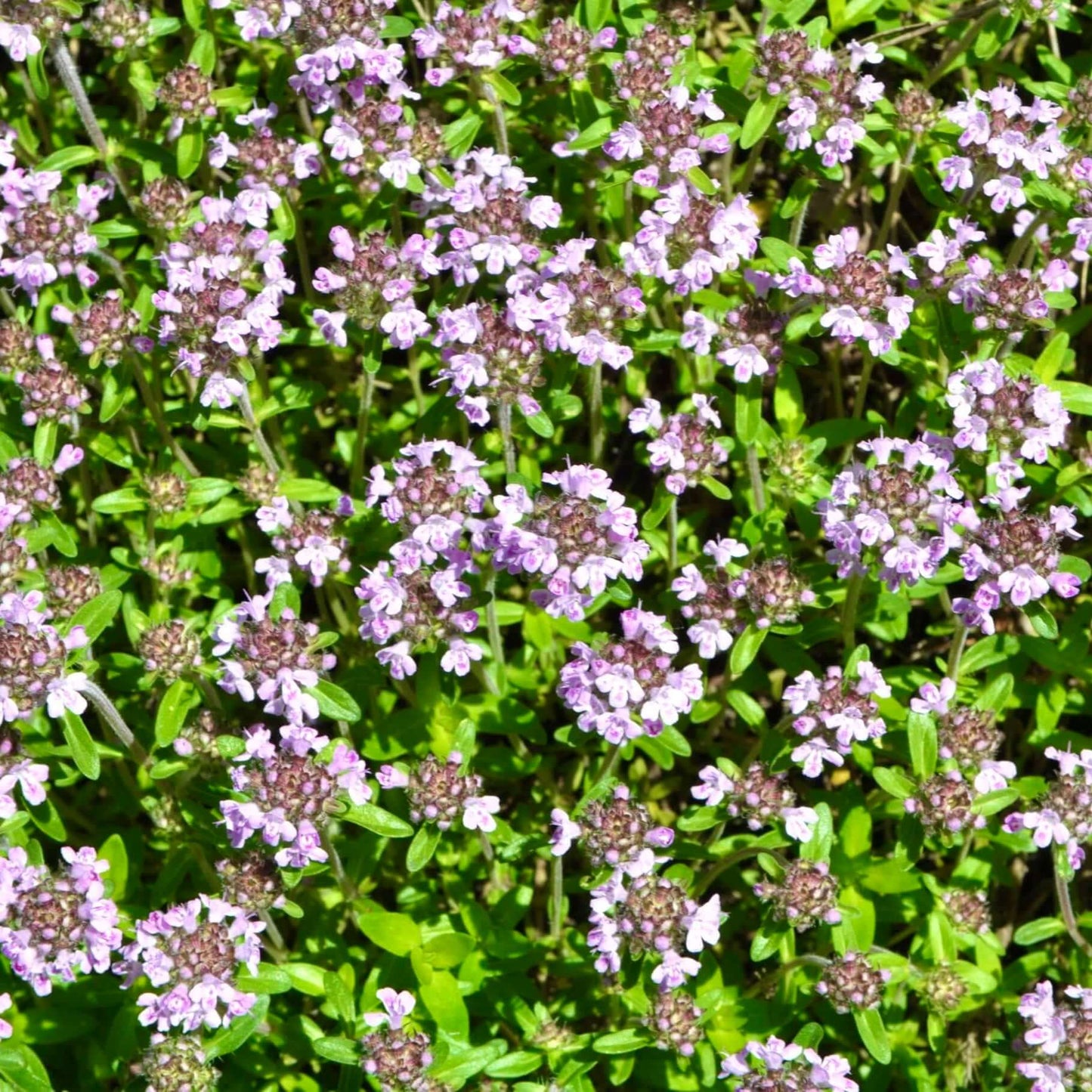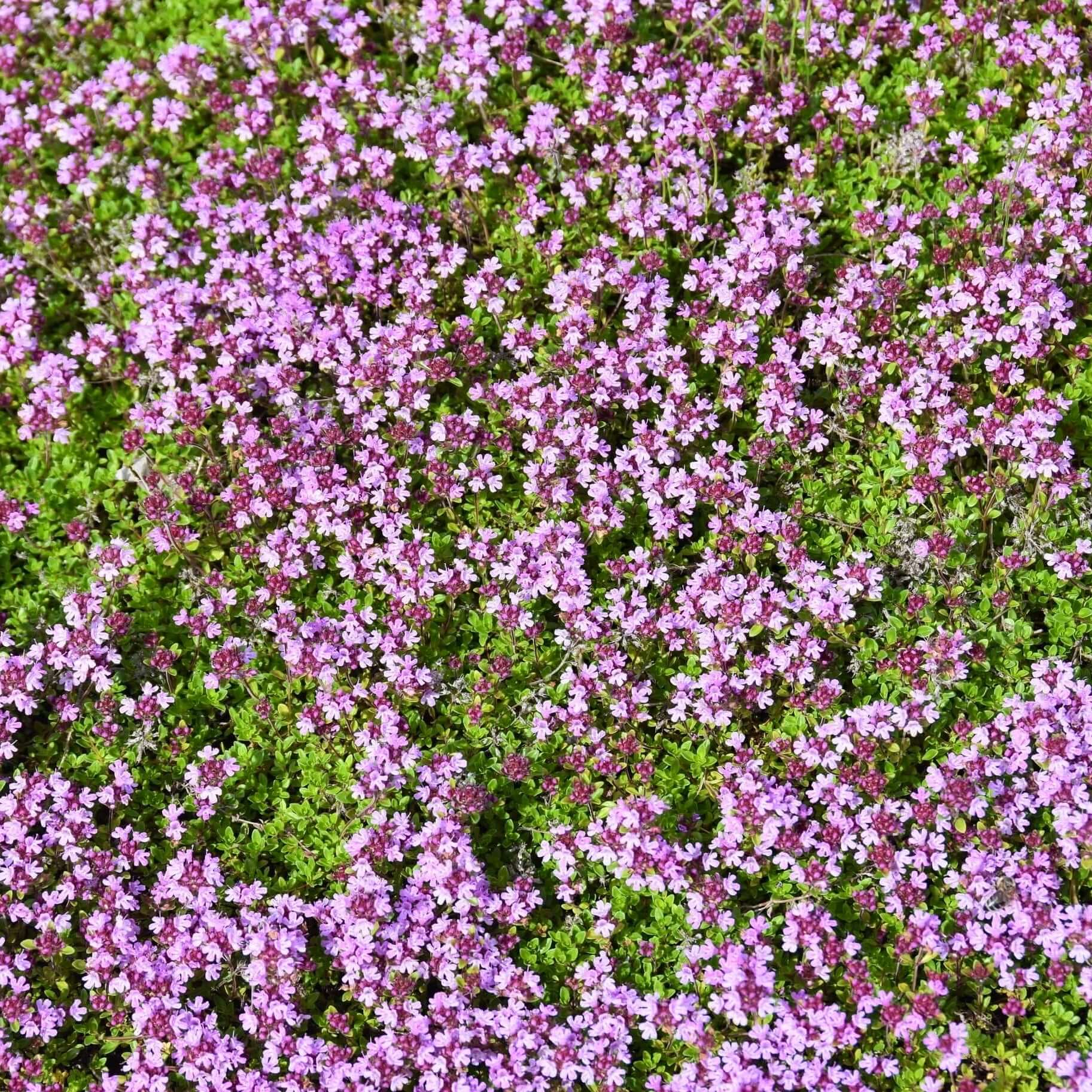Creeping Thyme (Thymus serpyllum) is a low-growing, aromatic herb that’s often used as a ground cover due to its dense, mat-like growth and tiny, attractive flowers. It’s popular for its versatility, low maintenance, and ability to thrive in various conditions. Here’s how to care for Creeping Thyme:
Light
- Full Sun: Creeping thyme thrives in full sun, where it will grow thick and produce abundant blooms. It needs at least 6 hours of direct sunlight daily to stay healthy and vigorous.
- Partial Shade: While it prefers full sun, creeping thyme can tolerate partial shade, especially in hotter climates, but it may become less dense and produce fewer flowers.
Watering
- Drought-Tolerant Once Established: Creeping thyme is relatively drought-tolerant once established. It does best with moderate, infrequent watering.
- Watering Frequency: Water deeply but infrequently, allowing the soil to dry out between watering sessions. Overwatering can lead to root rot. Newly planted thyme may need more regular watering until the roots are established.
- Avoid Waterlogged Soil: Ensure the soil has good drainage to prevent the plant from sitting in water, which can lead to fungal diseases.
Soil
- Well-Drained, Sandy or Loamy Soil: Creeping thyme prefers well-drained, light soil. It grows well in sandy or loamy soil but can tolerate poorer soils. If planting in clay-heavy soil, consider adding sand or gravel to improve drainage.
- Slightly Alkaline to Neutral pH: It prefers slightly alkaline to neutral soil (pH 6.0-8.0).
Temperature and Climate
- Hardiness: Creeping thyme is hardy in USDA zones 5-9. It can handle cold winters, though it may die back during extreme cold and return in the spring.
- Heat-Tolerant: It thrives in warm weather and can tolerate hot, dry conditions, making it an excellent choice for rock gardens and dry, sunny areas.
Fertilization
- Minimal Fertilizer Needs: Creeping thyme does not require much fertilization. In fact, over-fertilizing can lead to leggy growth and reduced blooming. If the soil is poor, you can add a balanced, slow-release fertilizer in spring to encourage growth.
- Organic Matter: Adding compost or well-rotted manure to the soil before planting can improve its fertility and structure without the need for heavy fertilization.
Pruning
- Light Pruning After Flowering: Trim back creeping thyme lightly after it has finished flowering to keep it neat and encourage more compact growth. This will also help prevent the plant from becoming too woody.
- Remove Dead or Leggy Stems: Regularly remove any dead or leggy stems to keep the plant looking its best.
Pests and Diseases
- Generally Resistant: Creeping thyme is quite pest-resistant, but it can occasionally attract aphids or spider mites. These can be managed with insecticidal soap or by rinsing the plant with water.
- Fungal Issues: Overwatering or poor drainage can lead to fungal problems, including root rot. Ensure proper drainage and avoid overhead watering to keep the foliage dry and healthy.
Uses and Benefits
- Ground Cover and Erosion Control: Creeping thyme spreads to form a dense mat that can help prevent soil erosion, making it an excellent ground cover for slopes and difficult areas.
- Pathways and Between Pavers: It’s often used between stepping stones or pavers, as it can withstand light foot traffic and releases a pleasant aroma when stepped on.
- Attracts Pollinators: The small, pink or purple flowers attract bees, butterflies, and other pollinators, making it a great addition to pollinator-friendly gardens.
- Culinary and Fragrant Uses: While not as pungent as upright thyme varieties, creeping thyme can still be used for cooking. The leaves have a mild, earthy flavor and can be used fresh or dried.
Mulching
- Light Mulching: Applying a thin layer of mulch around the plants can help retain soil moisture and keep weeds down. Be careful not to cover the foliage, as this can lead to rot.
Spacing
- The recommended spacing when planting creeping thyme is 6-10" between plants. Space plants closer together for denser and quicker coverage. Creeping thyme grows slowly in its first year, but spreads more quickly in subsequent years.
Creeping thyme is a beautiful, versatile, and low-maintenance plant that can thrive in a variety of conditions. With its charming flowers, aromatic foliage, and ability to attract pollinators, it’s a great choice for ground cover, pathways, and rock gardens.







